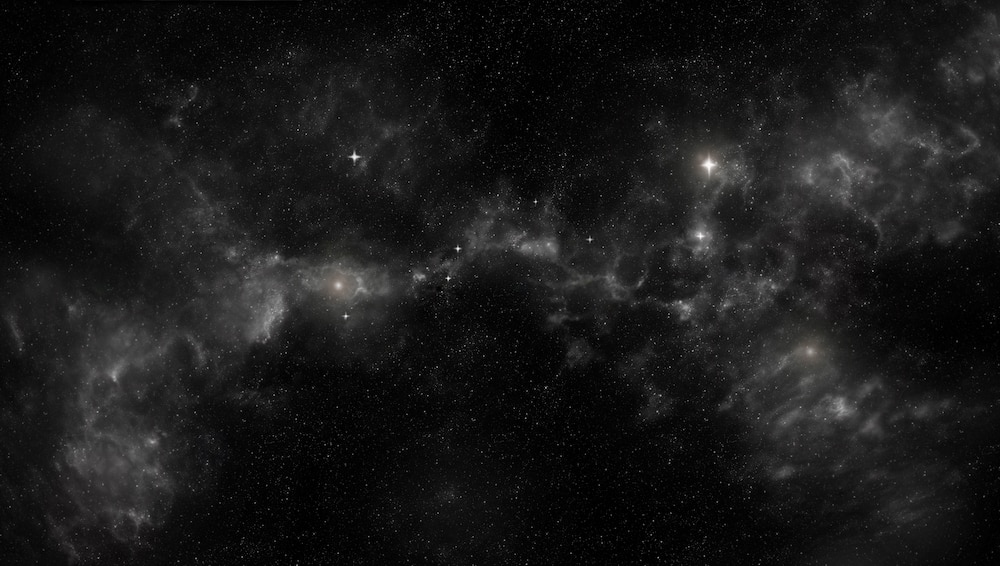Create a free profile to get unlimited access to exclusive videos, sweepstakes, and more!
Outer space is a freezer now, but it used to be an inferno
It was hot out there, as in out, out there.

That the vacuum of space is cold is an understatement. Tardigrades crawling on the outside of a rocket had to let themselves get frozen into a state of suspended animation, which is how so many survived, but it wasn’t always a freezer out there.
Finding out the temperature of the cosmic microwave background (CMB), the remnants electromagnetic radiation from the Big Bang, at an almost unfathomable distance away could tell us something. That was what astrophysicist Dominik Riechers of the University of Cologne was thinking when he and his team zeroed in on a galaxy that we on Earth can see as it was just 880 million years after the universe was born. He led a study recently published in Nature.
But what gave away the temperature of those dregs of radiation in starburst galaxy HFLS3? The haze of cold water vapor casting a shadow on the CMB looked suspicious.
“We knew that we were looking at water vapor because of the exact wavelength (in the microwave regime) the feature appeared at, since water has a unique characteristic spectral fingerprint, or distribution of features in different colors of light,” Riechers told SYFY WIRE.
So much energy was packed into the Big Bang that space was positively scorching when the universe first exploded into being. As everything rapidly expanded, things cooled down over the aeons (though temps still blaze near certain ultrahot objects such as stars and black hole accretion discs) and kept cooling. The universe is still supposed to chill as dark energy infinitely keeps it expanding, though the density of the dark energy is supposed to always stay the same.
While light in HFLS3 should appear dimmer when seen through the water vapor haze, and it does, most galaxies are only expected to dim up to a hundred percent. This would still hold for those that are not that far from Earth. However, the galaxy can get as dark as the void around it. Having cold water vapor in the way meant the galaxy dimmed by about 200% — darker than the surrounding sky. That seems impossible, but the sky is not completely dark when viewed in the microwave part of the spectrum because it is glowing with CMB light. Human eyes can’t see it.
“The cloud darkens the galaxy and the CMB, which is the only way to understand that the darkening can come from more than the galaxy's light itself,” said Riechers. “if we were to observe the same galaxy at the present epoch, we could not observe the same effect.”
Something like this would never be visible in a much closer galaxy, such as Andromeda, which is only 2.5 million light years away, and we only see it as it was 2.5 million years ago. Even the dinosaurs were long extinct by that time. The CMB around here is too cold for the same kind of interactions to happen between water molecules and light as they did in HFLS3. Light from HFLS3 takes 13 billion years to reach Earth, which is why the researchers were able to see the galaxy as it was before it cooled off too much for those interactions to become unobservable.
This could have huge implications for the nature of dark energy, the invisible and undetectable force thought to push the ever-expanding universe. Whether something appears to be going as predicted or seems off could be telling us what we’re getting right about properties or forms of dark energy and what needs to be investigated further. Space was hundreds of thousands of degrees after the Big Bang. Because colder water absorbs CMB radiation on its way to Earth, the darkness of HFLS3 told Riechers the temperature difference. That still only goes for one era.
“The more precise measurements we can have of the CMB temperature across cosmic history, the more sensitive we become to potential deviations from this form of dark matter,” he said. “It is evidence confirming consistency with one form of dark energy, but not others.”
We might still be in the dark about dark energy, but the Big Bang residue in the CMB is slowly illuminating it.


























